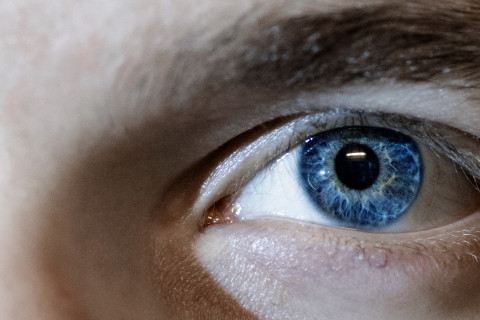The doctoral dissertation in the field of Pharmacy will be examined at the Faculty of Health Sciences at Kuopio campus. The public examination will be streamed online.
What is the topic of your doctoral research? Why is it important to study the topic?
The anterior ocular tissues are the first protective barrier of the eye, making them highly susceptible to damage by the external environment, injury, chemical and thermal burns, and corneal diseases such as conjunctivitis and dry eye. This damage moreover may lead to intense pain, discomfort, wound, inflammation, and disability, drastically affecting visual function. However, due to the complex physiology and anatomy of the ocular surface, ocular drug delivery has always been a significant pharmaceutical challenge. Topical administration, the most used route of administration for the treatment of anterior segment eye diseases has extremely poor ocular bioavailability (less than 5%), and short precorneal residence (a few minutes). In addition, the cornea and conjunctiva have unique barriers that can limit the penetration of drugs into the eye, making it challenging to develop effective treatments. Although permeability across cornea and conjunctiva has been abundantly explored, the drug distribution in these ocular tissues has not been well studied.
My topic of doctoral research is addressed to a better understanding of anterior segment pharmacokinetics. In my thesis, the distribution of drugs of varying lipophilicity in the corneal layers and conjunctiva was assessed. The potential of hydrogels in topical application to enhance precorneal retention time was investigated as its tear fluid kinetics were compared with formulations administered as conventional eye drops (solution and suspension). Furthermore, the efficacy and safety of a novel ferroptosis inhibitor, UAMC-3203, for corneal epithelial wound healing were investigated.
What are the key findings or observations of your doctoral research?
Assessing the effect of lipophilicity on drug distribution and partitioning in the corneal layers and conjunctiva using cassette dosing of 7 beta-blockers, the drug distribution and partition in corneal layers and conjunctiva were found to be dependent on the drug's lipophilicity and properties of the tissue. The distribution coefficient (Kp) values between the corneal epithelium and between the conjunctival and donor solution increased with increasing Log D7.4, while the reverse phenomenon was observed for partitioning from the lipophilic corneal epithelium to the hydrophilic stroma.
The hydrogels developed for topical application were found to be safe and achieved a greater drug concentration in tear fluid and prolonged precorneal retention compared to traditional eye drops.
A novel ferroptosis inhibitor, UAMC-3203, was found to have a corneal epithelial wound healing effect in ex vivo and in vitro models and was well-tolerated in rats following topical application.
The findings and models from this doctoral research can be valuable in development of more effective treatments for anterior segment ocular diseases.
What are the key research methods and materials used in your doctoral research?
In my doctoral research, a wide range of in vitro, ex vivo, and in vivo models were used in different species. Cellular uptake studies, in vitro cytotoxicity studies, and in vitro scratch assay were performed in human corneal epithelial cells. Excised porcine cornea and conjunctiva were used to investigate drug distribution in corneal layers and conjunctiva. An ex vivo alkali burn mouse eye model was used to test the efficacy of the novel compound UAMC-3203 for corneal wound healing. The chorioallantoic membrane model in chicken eggs was also used for the evaluation of potential ocular irritation. Matrix-assisted laser desorption/ionization imaging mass spectrometry (MALDI-IMS) was used to study the drug distribution of beta blockers in rabbits in vivo. Tear fluid kinetics of different formulations were also evaluated in rabbits in vivo.
The doctoral dissertation of Anusha Balla, Master of Science, entitled Insights into anterior segment eye drug delivery – ocular surface pharmacokinetics and novel therapeutics for corneal wound will be examined at the Faculty of Health Sciences. The Opponent in the public examination will be Professor Sara Nicoli of the University of Parma, and the Custos will be Professor Arto Urtti of the University of Eastern Finland.
Doctoral defence
For further information, please contact:
Anusha Balla, anusha.balla(a)uef.fi, 0405491019, https://uefconnect.uef.fi/en/person/anusha.balla/



